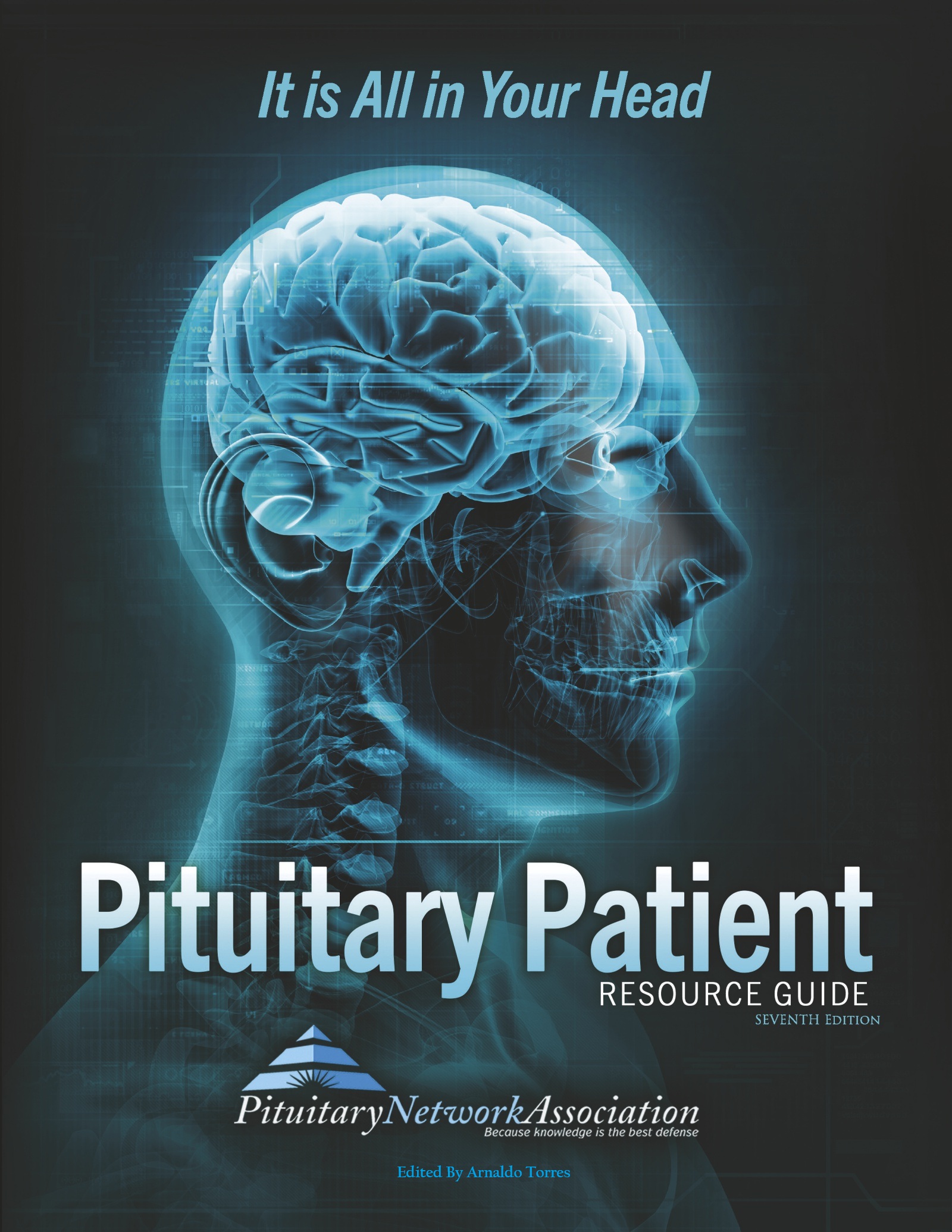Pituitary Glossary starting with P
PAI-1
Plasminogen activator inhibitor-1
Plasminogen activator inhibitor-1, a member of the serine protease inhibitor (serpin) superfamily, is the principal inhibitor to tissue-type plasminogen activator and urokinase-type plasminogen activator. Elevated plasma PAI-1 levels, an independent cardiovascular risk factor, has been shown to be a predictor of recurrent myocardial infarction (MI). Acute changes in plasma PAI-1 after MI is a predictor of mortality. PAI-1 levels are elevated in the individuals with hypertension, insulin resistance, hypertriglyceridemia, obesity, and the constellation of risk-factors known as the metabolic syndrome. PAI-1 is synthesized in the liver, vascular endothelium, vascular smooth muscle, and visceral adipose tissue. A number of factors have been shown to regulate PAI-1, including metabolic factors such as insulin, glucose, triglycerides; inflammatory cytokines such as tumor necrosis factor-a, transforming growth factor-ß, interleukin-1, and more notably, components of the RAAS, namely angiotensin II and aldosterone.
Palliative Care
Caring for a patient by maintaining the best quality of remaining life. Also offering support and guidance to the patient and family.
Care given to improve the quality of life of patients who have a serious or life-threatening disease. The goal of palliative care is to prevent or treat as early as possible the symptoms of a disease, side effects caused by treatment of a disease, and psychological, social, and spiritual problems related to a disease or its treatment. Also called comfort care, supportive care, and symptom management.
Palsy
Loss of function.
A general term most often used to describe severe or complete loss of muscle strength due to motor system disease from the level of the cerebral cortex to the muscle fiber. This term may also occasionally refer to a loss of sensory function.
Paralysis or condition that is characterized by uncontrollable tremor or quivering of the body or one or more of its parts, as in Bell’s Palsy or Cerebral Palsy.
Pancreas
A gland located behind the stomach that secretes digestive (pancreatic) juice into the intestines. The gland also produces insulin and glucagon.
A glandular organ located in the abdomen that produces pancreatic juices, which contain enzymes that aid in digestion; and produces several hormones, including insulin. The pancreas is surrounded by the stomach, intestines, and other organs.
A nodular organ in the abdomen that contains a mixture of endocrine glands and exocrine glands. The small endocrine portion consists of the islets of Langerhans secreting a number of hormones into the blood stream. The large exocrine portion (exocrine pancreas) is a compound acinar gland that secretes several digestive enzymes into the pancreatic ductal system that empties into the duodenum.
Pancreatography
Radiographic demonstration of the pancreatic ducts, after injection of radiopaque material into the distal duct.
Radiographic visualization of the pancreatic ducts after injection of contrast material into the pancreas
Panhypopituitarism
Loss of all pituitary hormones.
Can be a devastating potentially life threatening situation. May be partial or complete. May involve one or more anterior pituitary hormones. Symptoms are often related to the deficiencies of the target gland hormones.
Papilledema
Swelling of the optic nerve.
Indicates increased intracranial pressure on the optic nerve. Also called choked disk.
Paralysis
Loss of muscle function due to injury or disease of the nervous system.
Loss of ability to move all or part of the body; severe loss or impairment of motor function in part due to lesion of the neural or muscular mechanism. Paralysis can be complete or partial, and can occur on one or both sides of your body, one area or throughout the body. Paraplegia is paralysis of the lower half of the body; quadriplegia is paralysis of the upper and lower regions of the body. Paralysis can be due to stroke, nerve diseases, autoimmune diseases or injury.
Paranasal
Along side the nose
Usually refers to the sinus cavities.
Parasellar
Extending into the area surrounding the sella turcica – (beside, behind, or in front of).
The sella turcica is the bony structure at the base of the skull in which the pituitary gland rests.
Paresis
Weakness
Muscular weakness involving partial or incomplete paralysis. General paresis, or neurosyphilis is an impairment of mental function caused by damage to the nerves of the brain from untreated syphilis.
Paresthesia
Abnormal sensations, such as burning, prickling.
A sensation of pricking, tingling, or creeping on the skin having no direct cause and usually associated with irritation or injury to a sensory nerve or nerve root. Also identified by sensory loss, tingling and numbness, or loss of sensation.
Medical conditions causing paresthesias include: carpal tunnel syndrome, diabetes , migraines, multiple sclerosis, seizures, stroke, TIA or transient ischemic attack, underactive thyroid, or Raynaud’s phenomenon.
Paresthesias can also be caused by; remaining in the same position for prolonged periods, injury to a nerve, pressure on the spinal nerves (disk herniation), lack of blood supply to an area of the body, abnormal levels of calcium, potassium or sodium, lack of vitamin B12 or other vitamins, certain medications, toxic agents such as lead, alcohol or tobacco, radiation therapy.
Patency
The state of being freely open or exposed.
Unobstructed
Percutaneous
Passing through the skin, as an injection or a topical medicine.
Denoting the passage of substances through unbroken skin, as in absorption of an ointment containing the active ingredient; also passage through the skin by needle puncture, including introduction of wires and catheters.
Perfusion
Bathing an organ or tissue with a fluid.
The flow of blood or other fluid per unit volume of tissue, as in ventilation/perfusion ratio.






